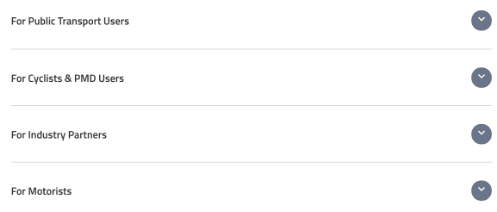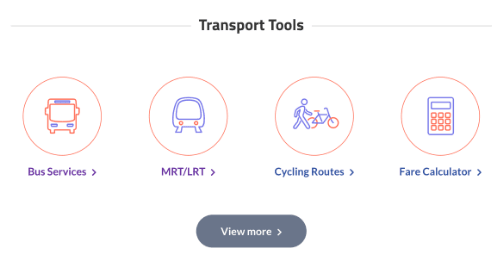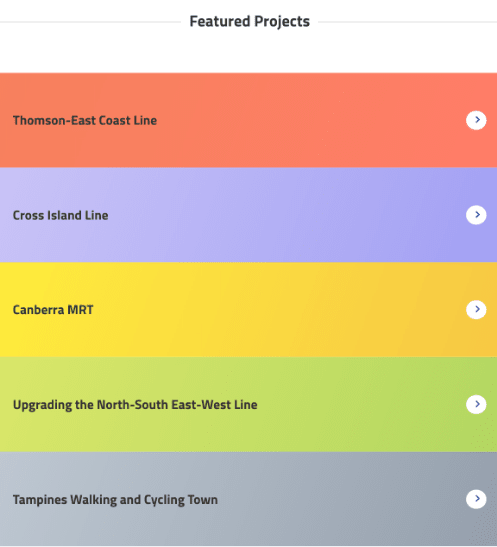These Will Continue to Support Efforts to Improve Singapore’s Air Quality and Vision
to Have All Vehicles Run on Cleaner Energy by 2040
To continue encouraging the adoption of cleaner commercial vehicles, the Commercial Vehicle Emissions Scheme (CVES) and Early Turnover Scheme (ETS) will be extended for two years till 31 March 2025. From 1 April 2023, the pollutant thresholds and incentives under the CVES, and incentives under the ETS will be adjusted. These adjustments continue to ensure that the total cost of owning and using a cleaner-energy vehicle over its lifespan remains lower than a more pollutive one. The motoring industry was consulted during the review and together we remain committed to the adoption of cleaner energy vehicles.
2. In April 2021, the CVES was introduced to encourage the adoption of cleaner light commercial vehicles (LCVs) which have lower emissions. The CVES is an outcome-based rebate scheme that applies to all new and used imported LCVs, including Light Goods Vehicles, Goods-Cum-Passenger Vehicles, and small buses, with maximum laden weight not exceeding 3,500kg. Under CVES, vehicles are classified into Bands A, B or C based on their worst-performing pollutant among the following: carbon dioxide (CO2)[1], hydrocarbons (HC), carbon monoxide (CO), nitrogen oxides (NOx) and particulate matter (PM) emissions. The vehicles are then granted an incentive or subject to a surcharge based on the band they are in.
3. The CVES works in tandem with the ETS that was introduced in April 2013, to promote the replacement of older, more pollutive diesel commercial vehicles and buses. The ETS provides a discount off the Prevailing Quota Premium[2] (COE bonus) when owners of older diesel commercial vehicles and buses switch to cleaner new vehicles. Since the implementation of the CVES and ETS, about 80 per cent of light commercial vehicles registered from Apr 2021 to Aug 2022 were of cleaner models, and over 60,000 eligible vehicles were replaced, as of September 2022.
Adjustments to Commercial Vehicle Emissions Scheme (CVES)
Pollutant Thresholds
4. From 1 April 2023, Singapore will adopt the Worldwide Harmonised Light Vehicles Test Procedure (WLTP) as the sole test procedure for new LCVs. The WLTP is a more rigorous test cycle that provides more realistic emissions results through better simulation of on-road driving performance.
5. The pollutant thresholds for CO2, HC, NOx and PM will be adjusted to ensure a balanced distribution of vehicle models across CVES bands in the transition to the more rigorous WLTP test cycle. Details of the adjustments to the pollutant thresholds for the revised CVES are in Annex A.
Incentive Quanta
6. Reflecting the narrowing upfront cost premium and lifecycle costs[3] savings of electric LCVs, there will be a stepdown in the Band A incentives from the current $30,000 to $15,000. To maintain the Government’s push towards cleaner energy vehicles (e.g. electric vehicles), the incentive for Internal Combustion Engine (ICE) models in Band B (mainly petrol) will be stepped down from the current $10,000 to $5,000. The surcharge for more pollutive ICE models in Band C (mainly diesel) will be raised from the current $10,000 to $15,000. These changes are in line with the Government’s vision to have all vehicles run on cleaner energy by 2040.
7. Based on the lifecycle cost savings from the use of electricity instead of fuel[4], Band A LCVs are assessed to have the lowest total cost of ownership over the vehicle’s lifespan. The most pollutive vehicles in Band C will still incur the highest total cost of ownership after applying the CVES surcharge. Details of the adjustments to the incentives for the adjusted CVES are in Annex B. The comparison of the total cost of ownership between Band A, B and C LCVs is shown in Annex C.
Adjustments to Early Turnover Scheme (ETS)
8. The ETS for LCVs and Heavy Commercial Vehicles (HCVs) (including Heavy Goods Vehicles, Very Heavy Goods Vehicles, Goods-Cum-Passenger Vehicles and buses exceeding 3,500kg) will also be extended till 31 March 2025, with adjustments to the incentives which will take effect from 1 April 2023. Under the adjusted ETS, replacements without tailpipe emissions will enjoy the highest incentives. The incentive for turnover to LCVs without tailpipe emissions will be higher than those with tailpipe emissions. The ETS incentive will complement CVES to help bridge the higher upfront cost of electric LCVs in CVES Band A, furthering the push for cleaner energy vehicles. Details of the adjustments to the incentives for the adjusted ETS are in Annex D.
9. The ETS for LCVs will cease after 31 March 2025. Vehicle owners may wish to utilise the ETS to turnover their vehicles early before the ETS for LCVs is discontinued. The Government will be studying other means, including regulatory levers, to encourage the early turnover of older commercial vehicles and buses in the future.
Impact on Motoring Industry and Vehicle Buyers
10. The National Environment Agency (NEA) has conducted industry consultations on the adjustments to CVES and ETS. NEA has taken note of the industry’s concerns regarding the higher upfront cost of electric LCVs and have made adjustments for a more gradual stepdown in Band A incentives from $30,000 to $15,000 instead of the originally planned stepdown from $30,000 to $10,000. An incentive of $5,000 will be granted to vehicles in Band B, instead of the originally planned removal of incentive. The adjustments to the CVES pollutant thresholds will continue to ensure a balanced variety of vehicle models across bands, while the adjusted CVES and ETS incentives will also maintain momentum towards cleaner vehicles.
11. NEA will also monitor the progress of the adjusted CVES, when more data on the performance of vehicles tested under WLTP is available. If necessary, NEA may revise the pollutant thresholds of CVES from 1 April 2024 onwards.
Annex A: Adjustments of Pollutant Thresholds for CVES
Annex B: Changes in Incentive Quanta for CVES
Annex C: Total Cost of Ownership Comparison for CVES Bands A, B and C Vehicles
Annex D: Changes in Incentive Quanta for ETS
Annex E: Examples of Possible LCV Models Under Adjusted CVES
Annex F: Adjusted Early Turnover Scheme (With effect from 1 April 2023)
Annex G: Summary on PQP Payable and Calculation of COE
Annex H: Benefitting from the Adjusted CVES and ETS















